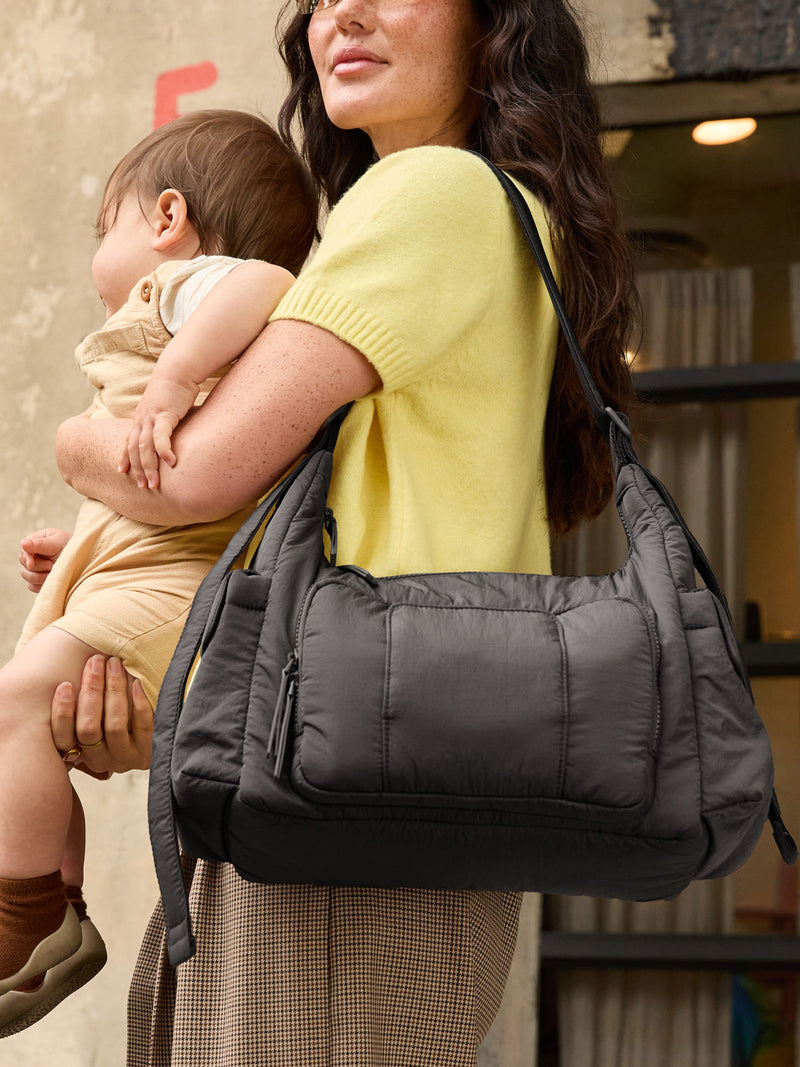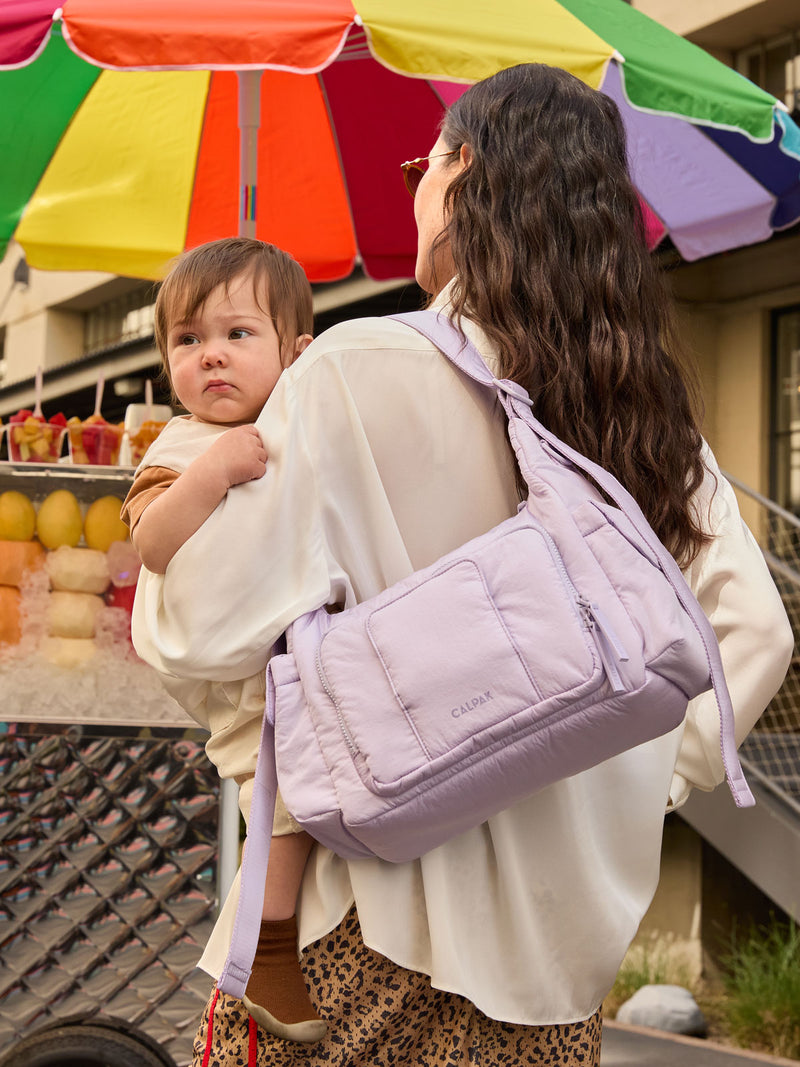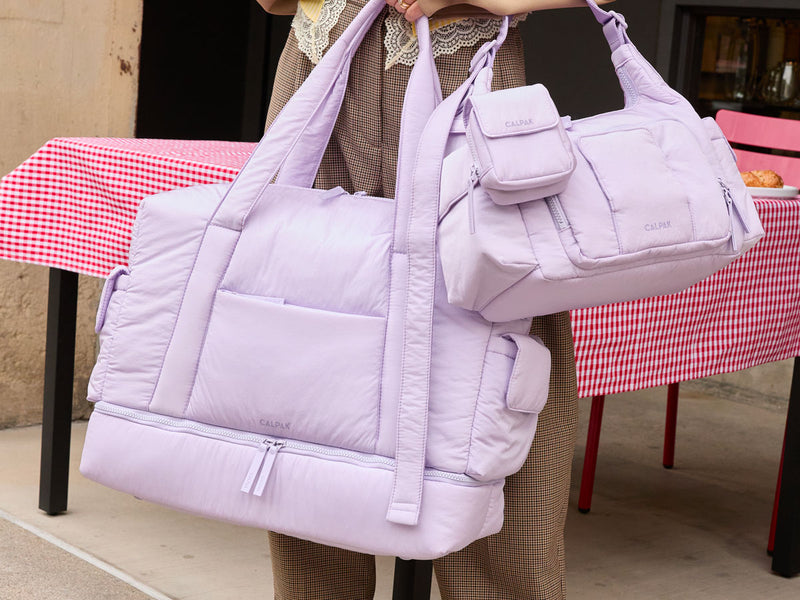



Traveling with a baby opens up a world of new adventures, but let's be honest, it can feel daunting. The key to a successful trip isn't luck, it's preparation. Whether you're planning a cross-country flight or a weekend road trip, our ultimate guide of baby travel tips is here to take the stress out of the journey. From what to pack to how to survive a long flight, we’ve got you covered so you can focus on making memories.
A little prep work goes a long way in ensuring a smooth trip for everyone. The goal is to anticipate needs and minimize surprises.
Packing smart is your superpower when traveling with an infant. Beyond the basics, these items can be lifesavers.
Traveling with a baby opens up a world of new adventures, but let's be honest, it can feel daunting. The key to a successful trip isn't luck, it's preparation. Whether you're planning a cross-country flight or a weekend road trip, our ultimate guide of baby travel tips is here to take the stress out of the journey. From what to pack to how to survive a long flight, we’ve got you covered so you can focus on making memories.
A little prep work goes a long way in ensuring a smooth trip for everyone. The goal is to anticipate needs and minimize surprises.
Packing smart is your superpower when traveling with an infant. Beyond the basics, these items can be lifesavers.


Aim for flights that align with your baby’s natural sleep schedule. A red-eye or a flight during naptime increases the chance they’ll sleep through a good portion of the journey, making it easier for everyone.
The TSA allows reasonable quantities of breast milk, formula, and juice in your carry-on even over 3.4 ounces. They are exempt from the quart-sized bag rule. Simply declare them at security for a quick additional screening.
You can use your stroller right up to the airplane door! Simply get a gate-check tag from the gate agent. This allows you to navigate the airport easily and keeps your expensive gear safe from rough baggage handling.
While children under 2 can fly for free on your lap, the FAA strongly recommends securing them in an approved car seat in their own seat. It’s the safest option and gives you much-needed extra space.
When the gate agent calls for families traveling with young children, board immediately! This gives you ample time to get settled, stow your gear, and wipe down your area without the pressure of a line behind you.
Surprise is a powerful tool. Pack a few new, small toys and books along with their well-loved favorites to keep them entertained during the flight. The novelty can buy you precious quiet time.
Encourage feeding or a pacifier during ascent and descent to help equalize ear pressure and prevent discomfort. Whether it’s nursing, a bottle, or a pacifier, this is one of the most effective tips for flying with a newborn.
Many major airports have fantastic, secure play areas for kids. A quick online search can help you find them. Letting your baby crawl or play before a flight helps them burn energy before being confined.
Bring a small comfort item like a favorite book, a lovey, or their pajamas. Replicating even a small part of their bedtime routine at the hotel can signal that it’s time to sleep in a new place.
If traveling with an infant internationally, every person, including newborns, needs a passport. Start this process early, as it can take time. Also, research any entry requirements for minors for your destination country.
Aim for flights that align with your baby’s natural sleep schedule. A red-eye or a flight during naptime increases the chance they’ll sleep through a good portion of the journey, making it easier for everyone.
The TSA allows reasonable quantities of breast milk, formula, and juice in your carry-on even over 3.4 ounces. They are exempt from the quart-sized bag rule. Simply declare them at security for a quick additional screening.
You can use your stroller right up to the airplane door! Simply get a gate-check tag from the gate agent. This allows you to navigate the airport easily and keeps your expensive gear safe from rough baggage handling.
While children under 2 can fly for free on your lap, the FAA strongly recommends securing them in an approved car seat in their own seat. It’s the safest option and gives you much-needed extra space.
When the gate agent calls for families traveling with young children, board immediately! This gives you ample time to get settled, stow your gear, and wipe down your area without the pressure of a line behind you.
Surprise is a powerful tool. Pack a few new, small toys and books along with their well-loved favorites to keep them entertained during the flight. The novelty can buy you precious quiet time.
Encourage feeding or a pacifier during ascent and descent to help equalize ear pressure and prevent discomfort. Whether it’s nursing, a bottle, or a pacifier, this is one of the most effective tips for flying with a newborn.
Many major airports have fantastic, secure play areas for kids. A quick online search can help you find them. Letting your baby crawl or play before a flight helps them burn energy before being confined.
Bring a small comfort item like a favorite book, a lovey, or their pajamas. Replicating even a small part of their bedtime routine at the hotel can signal that it’s time to sleep in a new place.
If traveling with an infant internationally, every person, including newborns, needs a passport. Start this process early, as it can take time. Also, research any entry requirements for minors for your destination country.


Expect to stop every 2-3 hours. Use these breaks for feedings, diaper changes, and to simply get your baby out of the car seat for a bit. It’s a great chance for everyone to stretch their legs.
Ensure your baby’s car seat is properly installed and that the harness is snug. The chest clip should be at armpit level, and you should not be able to pinch any excess strap at the shoulder.
Pack a small cooler with bottles and snacks. Have a separate bag upfront with diapers, wipes, a changing pad, and a change of clothes so you don’t have to dig through the trunk at every stop.
Sunshades on the windows can prevent glare and help your baby nap. Play soft music or white noise, and consider a car seat mirror so you can see them without turning around.
The right gear can be the difference between a stressful trip and a smooth one. Investing in versatile, organized, and portable products designed for parents on the move means you spend less time searching for wipes and more time enjoying the moment. From smart diaper bags with dedicated pockets to compact organizers that keep everything in its place, having a system is everything.
Explore our entire Baby Collection for gear designed to simplify your next family adventure.
Expect to stop every 2-3 hours. Use these breaks for feedings, diaper changes, and to simply get your baby out of the car seat for a bit. It’s a great chance for everyone to stretch their legs.
Ensure your baby’s car seat is properly installed and that the harness is snug. The chest clip should be at armpit level, and you should not be able to pinch any excess strap at the shoulder.
Pack a small cooler with bottles and snacks. Have a separate bag upfront with diapers, wipes, a changing pad, and a change of clothes so you don’t have to dig through the trunk at every stop.
Sunshades on the windows can prevent glare and help your baby nap. Play soft music or white noise, and consider a car seat mirror so you can see them without turning around.
The right gear can be the difference between a stressful trip and a smooth one. Investing in versatile, organized, and portable products designed for parents on the move means you spend less time searching for wipes and more time enjoying the moment. From smart diaper bags with dedicated pockets to compact organizers that keep everything in its place, having a system is everything.
Explore our entire Baby Collection for gear designed to simplify your next family adventure.
Most pediatricians give the green light for short car trips almost immediately after birth. For longer trips and air travel, it's often recommended to wait until your baby is at least 2-3 months old and has had their first round of vaccinations, but always consult your doctor first.
The best way is by car for short distances, as it allows for complete control over stops and cleanliness. Keep trips brief, plan for frequent feeds, and never let your baby sleep in their car seat outside the car. For more detailed advice, see our guide on traveling with a toddler which has some overlapping tips.
Yes, most airlines allow newborns as young as 2-3 days old to fly. However, many pediatricians advise waiting until your baby’s immune system is more developed, typically around 2-3 months, unless travel is necessary. Always get your pediatrician's approval before flying with a newborn. For more family advice, read our family travel tips blog.
Most pediatricians give the green light for short car trips almost immediately after birth. For longer trips and air travel, it's often recommended to wait until your baby is at least 2-3 months old and has had their first round of vaccinations, but always consult your doctor first.
The best way is by car for short distances, as it allows for complete control over stops and cleanliness. Keep trips brief, plan for frequent feeds, and never let your baby sleep in their car seat outside the car. For more detailed advice, see our guide on traveling with a toddler which has some overlapping tips.
Yes, most airlines allow newborns as young as 2-3 days old to fly. However, many pediatricians advise waiting until your baby’s immune system is more developed, typically around 2-3 months, unless travel is necessary. Always get your pediatrician's approval before flying with a newborn. For more family advice, read our family travel tips blog.